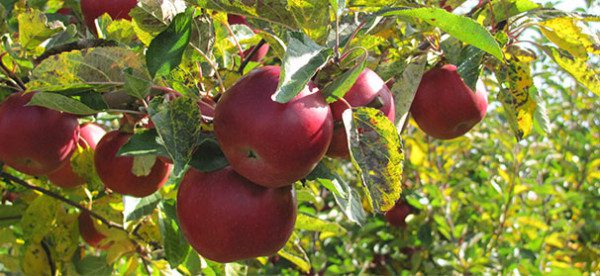

Oct 1, 2012Looking forward to normal
1945 has 2012 to thank for one thing: 1945 is no longer the black sheep of the fruit crop years.
2012 may have taken over that spot.
And as far as Mark Fleckenstein is concerned, if it’s another 67 years before apple growers see the fruits of their labors destroyed in a freak burst of weather, that’s fine with him.
Fleckenstein represents one of four families who run the fourth-generation Beak and Skiff Apple Farms in Lafayette, N.Y. It’s a multifaceted operation. With 300 acres devoted to apple production, the family operates a u-pick, along with a country store, winery and distillery. They also make their own cider.
It’s good to be diversified with multiple operations and value-added products, especially in a year like this when they lost about 80 percent of their apple crop, said Fleckenstein. On the other hand, most everything they do depends on apples.
Beak and Skiff typically grows McIntosh, Paula Red, Ginger Gold, Empire, Gala, Delicious, Ida Red and Crispin Red varieties. They’ve also planted about 4 acres of New York club varieties.
Honeycrisp and Gala are the primary varieties that survived this year – and not at their usual levels. Fleckenstein described a typical scenario in the orchard this summer: a row of Ida Red with no apples next to an Empire row with hardly any fruit next to two rows of Gala with apples on the trees.
“Those two Gala rows? For this year, that’s a full crop,” he said. “It’s only half a crop, but it’s a full crop for this year.”
Beak and Skiff opened its farm market around mid-August with some Paula Red and Jonamac. When those went, picking moved on to Gala and Honeycrisp.
“We will run out of certain varieties,” he said.
Because of the low supply, Fleckenstein expected they would be placing bins of apples in the orchards for visitors to choose from, to make up for their absence on the trees.
The family made sure to set aside enough apples for its retail outlets, and to be able to make its popular hard cider and vodka products.
They also started fall with apples for producing cider, but Fleckenstein didn’t know how long that would last – or the impact the price will make. Last year, the farm was selling a case of 6 gallons wholesale for around $22. This year, it’s $29.
“We’ve been able to get some cider apples, but it’s been a struggle,” he said in September. “We probably won’t make as much as normal, but we probably won’t sell as much as normal because the price of the juice apples is so high now.”
And if they run out, they’ll cope, he said.
“We’ll do the best we can, and if you can’t get them you can’t press,” he said.
Meanwhile, it wasn’t a typical summer. Operating on a “bare-bones budget” meant a moratorium on overtime and spending, with no immediate end in sight.
“We have crop insurance – you have to have crop insurance,” he said. “And then we’re just not spending any money. We’re not fixing anything, not buying any tractors, no new pick-up trucks – all the things farmers love to spend money on.
“We just have to carefully watch our costs through the winter and through next summer, because we’re not going to have any money coming in until the 2013 crop. Oh, we’ll have some this fall, but it won’t be back to normal until the winter of 2013-2014.”
By Kathy Gibbons, Editorial Director














